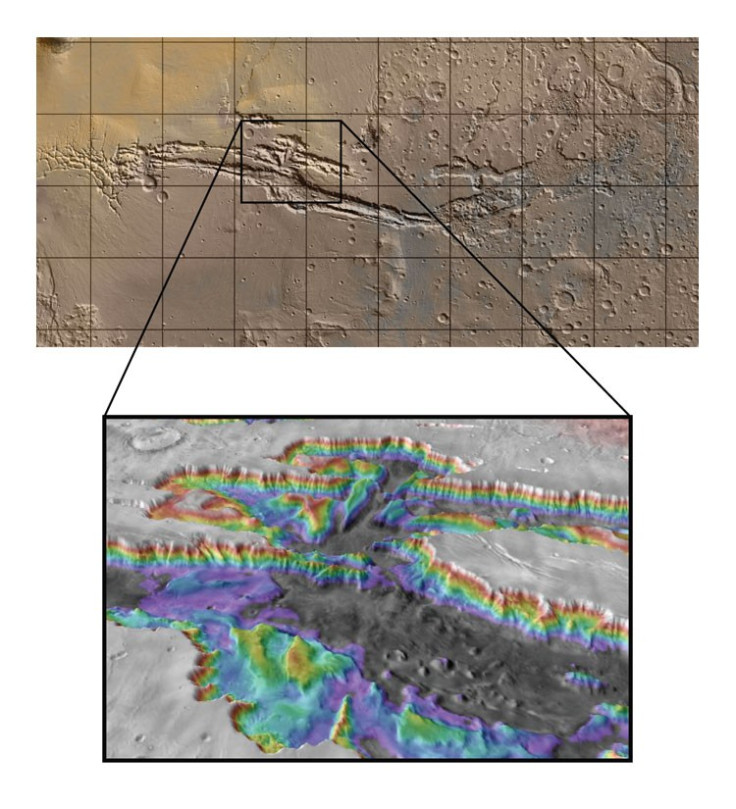Nasa Gets More Clues About Interior Layered Deposits in Mars

Researchers have got more clues as to how Interior Layered Deposits were formed on Mars.
Researchers from Nasa's Johnson Space Center in Houston and the Planetary Science Institute found Interior Layered Deposits (ILD) in Valles Marineris, the tectonic trough system on Mars, may have formed in a cold, dry ancient Martian climate. They believe massive dust-rich glaciers could have deposited Interior Layered Deposits in Valles Marineris.
Valles Marineris is a 3,000-kilometer-long tectonic trough system on Mars, which reaches depths of approximately eight kilometers (five miles) below the surrounding terrain. Inside the canyon are vast mounds of layered sediments of enigmatic origins.
Interior Layered Deposits were discovered by the Mariner 9 spacecraft about 40 years ago. Since then researchers and scientists were puzzled as to how ILD deposits found within the Valles Marineris.
Earlier, some researchers had suggested that the ILDs formed from volcanic processes because the faulting and rifting that formed the canyon could easily lead to thinning of the crust, high heat flow and ascent of magma.
In 1990s, the Thermal Emission Spectrometer instrument showed that the deposits contain gray hematite, similar to deposits explored at Meridiani Planum by the Mars Exploration Rover Opportunity.
Later, a French team of researchers produced intriguing new results that further complicated the interpretations of ILDs on Mars. They showed that the deposits contain sulfate minerals - which are typically found in desert playa or shallow sea environments on Earth and are not dominant phases in volcanic terrain.
Recently, several publications also suggested that sulfate-bearing ILDs were formed by groundwater upwelling.
Researchers believe that it is impossible for water to have formed Interior Layered Deposits, because if groundwater have formed the ILDs, the entire canyon should have been filled with rich sulfur sediments.
Researchers suggested that the ILDs formed from massive, dusty ice deposits which once filled much of the canyon. Such a scenario is consistent with the size, topographic configuration of the deposits and with their mineralogy suggesting weathering in an acidic, water-limited environment.
"There is a strong possibility that ancient Mars was largely cold and icy," said Paul Niles, space scientist at the Nasa in a statement.
"The early atmosphere could have very easily been completely lost very early on leaving behind cold surface temperatures. This may not have provided very hospitable conditions for martian life and may suggest that future exploration should be directed towards the martian subsurface where temperatures were likely to be warmer and water could have been present".
© Copyright IBTimes 2025. All rights reserved.





















